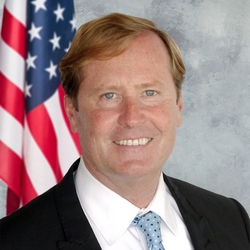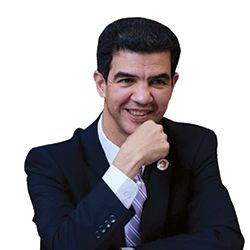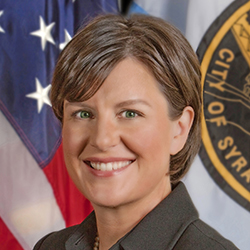During the presidential race last year, Hillary Clinton pledged to roll out in her first 100 days a “comprehensive infrastructure proposal” totaling $275 billion over five years. Not one to be outdone, Donald Trump promised to invest up to $1 trillion into the country’s aging infrastructure, an amount several times the size of his rival’s.
But now that he has taken office, it’s unclear whether Trump will live up to his promise – or, to put it another way, which Trump will win out.
The president’s initial budget proposal swerved off in an entirely different direction, with sharp cuts to key transportation funding programs that threaten major projects in New York like the Gateway rail tunnel under the Hudson River and the next phase of the Second Avenue subway. Yet Trump and members of his administration continue to insist that he will follow through on his $1 trillion infrastructure plan, even as skeptics wonder where the money will come from and whether he’ll have the political leverage with both parties to seal the deal.
In this spotlight on transportation infrastructure, we interview three key players – Commissioner of the state Department of Transportation, Matthew Driscoll, Syracuse Mayor Stephanie Miner and Ydanis Rodriguez, the chairman of the New York City Council Transportation Committee – about the likelihood of major federal spending cuts in New York under Trump as well as key issues being decided closer to home, from the use of design-build project delivery to the ongoing renovation of LaGuardia Airport.
RELATED: Who is authorized for design-build and who is not?
Matthew Driscoll
Commissioner, New York State Department of Transportation
C&S: The governor and state Legislature recently agreed on a state budget. What did you like in the agreement and what else should’ve been included when it comes to transportation?
MD: The 2018 budget continues to deliver on the governor’s historic commitment to revitalize New York state’s infrastructure. In partnership with public authorities, and local and federal governments, the state is investing $100 billion in transformative projects across New York, the largest infrastructure and development plan in the nation.
The state’s $100 billion plan is reimagining our airports; increasing the capacity of our transit hubs; modernizing our subway, bus and commuter rail networks; and rebuilding roads and bridges across the state. The budget provides $5.1 billion in transit operating assistance and $792.8 million in new dedicated funding for local highway and bridge programs – an increase of $115 million from last year. That includes $100 million in PAVE-NY assistance to local governments for highway and bridge rehabilitation, $65 million in funding for Extreme Winter Recovery and $150 million in funding for Bridge NY. The plan also includes $26.5 million for airport capital improvements, a $10 million increase from last year.
Other highlights include: $700 million to advance Gov. (Andrew) Cuomo's sweeping plans to transform the historic James A. Farley Post Office (Building) into a world-class transportation hub; $564 million to improve the Van Wyck Expressway and ease access to JFK Airport; $270 million to complete the Kosciuszko Bridge with a new westbound span; $700 million toward the $1.8 billion reconstruction of the Bruckner-Sheridan Interchange; $150 million to accelerate reconstruction of the town of Woodbury Transit and Economic Development Hub; $130 million to accelerate reconstruction of a segment of the Nassau Expressway in Nassau County to mitigate flooding; $120 million to strengthen the Long Island Rail Road with station improvements, a direct connection to MacArthur Airport and a new stop at Brookhaven National Laboratory; and $15 million for construction of a new passenger rail station in Schenectady.
What else would I like to see? A strong federal commitment to support transportation, which is vital to mobility, economic growth and quality of life for New Yorkers and our nation.
RELATED: LaGuardia: From Third World to First World
Ydanis Rodriguez
Chairman, New York City Council Committee on Transportation
C&S: What will your committee focus on before the end of the term, and what do you hope it can accomplish?
YR: The transportation committee will continue to focus on transit equity for disconnected New Yorkers and communities without ample options. Fair Fares and a publicly funded Citi Bike expansion play a big role in this. Beyond that, we’ll focus on the future of transportation in our city and (how to) build more sustainable and resilient networks that don’t rely as much on personal vehicles.
C&S: What will you be watching for in the rollout of the citywide ferry service?
YR: Ferries have long been a part of New York City’s history and bringing them back helps to create an important redundancy in our system. I’ll be looking to see if ridership can build early and if we can more seamlessly integrate ferries into existing networks, like our Citi Bike network.
C&S: Where do you stand on the idea of approaching the Fair Fares proposal through a pilot? Also, how optimistic are you that the administration might come around and support it?
YR: The first step was getting Fair Fares into the council budget response; this was an important moment for seeing this initiative through to fruition. Working with Riders Alliance and (the Community Service Society of New York), we developed a lower cost phase-in program that could ease the burden on the city at the outset, while still supporting New Yorkers facing the most severe poverty. I remain hopeful that Mayor (Bill) de Blasio – who has placed such an emphasis on tackling cycles of poverty and helping to provide opportunities to those who once may have been forgotten – will recognize (the) support we’ve received from so many sectors and how big a win this could be for his legacy. At the end of the day, this is less a transportation initiative than it is an anti-poverty initiative.
RELATED: Trump's transportation budget has New York driving in circles
Stephanie Miner
Syracuse Mayor
C&S: As an upstate mayor, what are your thoughts on transportation infrastructure in the new state budget?
SM: We’re still working our way through the particulars. I don’t think there’s any cons for transportation infrastructure. The big (negative) is just there’s just not enough money and how to most effectively get it to the municipalities that can use it. The number of transportation systems we have upstate – or downstate for that matter – are old and our weather is such that they really take a beating, in particularly in upstate because of our climate. We use a lot of salt and that does tremendous damage and so there are huge needs. I just got a letter from (state) Sen. (John) DeFrancisco talking about the consolidated highway project, the CHIPS fund, (which) got an extra $3 million. All of that we will put to good use.
C&S: What would you have liked to seen included in the budget that wasn’t when it comes to transportation and infrastructure?
SM: We’ve done a lot of work here in Syracuse using our innovative team, so for example using sensors and using different paving materials that could extend the life of the roads and bridges. Looking at doing infrastructure all at once – the dig once program, so that you can do the sewer, the utility and put broadband instead of just putting (funding) for just for roads, bridges, broadband and utilities. We could do all of the work, because the most expensive part of infrastructure is generally cutting into the road.
C&S: Do you think local officials have enough of a voice when it comes to budget talks?
SM: I think we do have a voice and we’ve been advocating. Local officials have been talking about infrastructure before it became the hip buzzword. I started talking about it five years ago and people would roll their eyes at me. Now, that’s not the case anymore and I think people, citizens believe that maintaining infrastructure in a state of good repair is a key mission of government and it’s becoming even more difficult to do it because for a long time, the federal government and state government walked away from their responsibility to take care of infrastructure. Now, we’ve started to turn that around, but we still have a good 10 to 15 years where funding hasn’t been available in amounts in where you could keep infrastructure in good repair.





